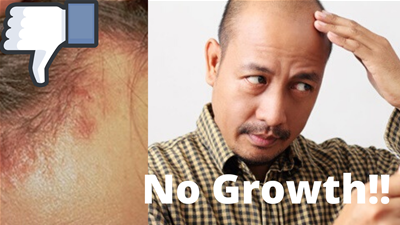 Seborrheic dermatitis is a common skin condition that affects millions if not billions of people worldwide- this condition causes itchy, flaky skin, which can develop on the face or scalp. Many confuse this condition with dandruff, but dandruff is a different condition. In this article, we will discuss whether seborrheic dermatitis can affect the growth of a hair transplant.
Seborrheic dermatitis is a common skin condition that affects millions if not billions of people worldwide- this condition causes itchy, flaky skin, which can develop on the face or scalp. Many confuse this condition with dandruff, but dandruff is a different condition. In this article, we will discuss whether seborrheic dermatitis can affect the growth of a hair transplant.
Does Seborrheic Dermatitis Cause Hair Loss?
Generally speaking, seborrheic dermatitis does not cause hair loss. However, this condition causes inflammation and itchiness, which can cause temporary hair loss due to scratching. Excessive scratching can damage hair follicles, stunting their growth. Moreover, this damage can prematurely send the hair follicles into the telogen (resting) phase.
There are three phases to a hair follicles life cycle:
*anagen (growth phase)
*catagen (transitional period)
*telogen (resting phase)
What Causes Seborrheic Dermatitis
An overproduction of sebum causes seborrheic dermatitis, and sebum is an oil that secretes through the sebaceous glands. The medical field is unsure why this occurs, but experts believe this is due to a genetic vulnerability or auto-immune condition.
DHT, the hormone responsible for causing androgenic alopecia (genetic hair loss) found in the sebaceous glands, is thought to be secreted through sebum as well. A big reason why Nizoral (ketoconazole) shampoo is effective at treating hereditary hair loss is that it removes sebum from the scalp. Nizoral treats dandruff and seborrheic dermatitis.
Does Seborrheic Dermatitis Affect Hair Transplant Growth?
In short, possibly. Allow us to explain why. Hair transplant surgery, while minimally invasive, still has the potential to cause minor swelling and inflammation. Seborrheic dermatitis also causes redness and itching, during the first seven days after a hair transplant procedure, the grafts are vulnerable- this means any scratching, itching or inflammation can damage the grafts.
Hair transplant grafts are anchored permanently into the scalp around the ninth day if scabs are still present. However, grafts anchor into the scalp by the seventh day when the recipient area is clean and crust-free, so it is vital that patients keep their recipient clean. If patients suspect they may be suffering from seborrheic dermatitis, they should contact their hair transplant surgeon immediately for treatment.
Conclusion
In general, seborrheic dermatitis should not affect the outcome of a hair transplant procedure. Still, if the condition begins to aggravate the scalp, causing uncontrollable itching, then it may cause weak growth. Hair transplant patients must treat this condition before having a hair transplant procedure.

